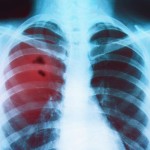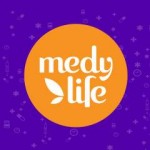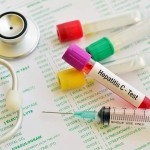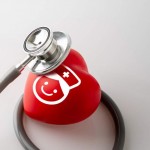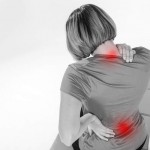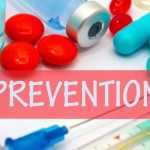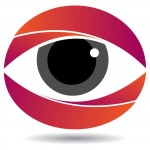Back Pain
Acute or short term back pain lasts for few days to few weeks. It usually feels like an ache, strain or rigidity in the back. Chronic back pain persists for more than 3 weeks.
The pain is generally triggered by improper posture while sitting or standing, bending awkwardly, or lifting incorrectly. Back pain is not generally caused by a serious condition and, in most cases, it gets better within 1-2 weeks. It can be treated by taking painkillers.
Symptoms
Upper or middle back pain
Upper or middle back pain can occur anywhere from the base of neck to the bottom of rib cage. Upper and middle back pain is less common than lower back pain as bones in this area of back are not as flexible as those in lower back and neck.Upper or middle back pain often causes a dull, burning, or sharp pain. Symptoms like:
• Weakness in arms or legs
• A numb or tingling sensation in arms, legs, chest, or abdomen (stomach area)
Lower back pain
The pain will often only affect the lower back. The pain can:
• Increase suddenly after lifting something heavy or twisting back awkwardly
• It can develop gradually as a result of poor posture.
• Occasionally, it may occur for no apparent reason.
• The pain may be worse at night, during activity, or after sitting in the same position for a long time, such as after a long car journey. Sometimes, lying down flat may help ease the pain.
The other forms of back pain:
• Painful stiffness of the shoulder, which makes it difficult to dress, drive or sleep, may be a sign of frozen shoulder.
• Pain in the joints (including the back) during walking and stiffness in the morning are symptoms of arthritis.
• Lower back pain, buttock pain, neck pain and stiffness and pain in the sacroiliac joint (the joint that connects the pelvis to the spine) are all possible symptoms of ankylosing spondylitis.
• Neck pain and stiffness, headaches and lower back pain following an accident are common symptoms of whiplash.
• Pain in lower back that moves down the buttocks into one or both of legs may be a symptom of sciatica.
• Soreness in lower back, muscle weakness and tight muscles may be caused by a slipped disc. If someone have a slipped disc, the pain usually radiates down the leg.
Causes
• Bending for long periods
• lifting, carrying, pushing or pulling incorrectly
• Twisting
• Over-stretching
• Driving in a curved position or driving for long periods without taking a break
• Overuse of the muscles, usually due to sport or repetitive movements
Risks factors include:
• Pregnancy
• Overweight or obese
• Weakness Bones
• Stress
• Depression
Diagnosis
Most cases of back pain do not require medical attention and can be treated with painkillers and self-care. The physical examination will usually assess your capacity to sit, stand, walk and lift your legs, as well as testing the range of movement in your back.
Treatments
Pain relievers: Paracetamol and NSAIDs (Non-steroidal anti inflammatory drugs) such as ibuprofen etc are effective pain killers during back pain.
Hot and cold treatment: Hot bath or a hot water bottle placed on the affected area helps ease the pain. Cold treatment such as an ice pack or a bag of frozen vegetables, placed on the painful area is also effective.
Relaxing: Trying to relax is a crucial part of easing the pain because muscle tension caused by worrying about your condition can make things worse.
Exercise: A normal regime should involve up to eight sessions over a period of up to 12 weeks. It should be in group supervised by a qualified instructor. The classes may include exercises to strengthen muscles and improve posture.
Preventions
• Back pain is generally prevented by regular exercise.
• Right posture during standing: Stand upright with your head facing forward and back straight
• Right posture during sitting: Sitting upright with support in the small of back.
• Wear flat shoes
• Try reducing stress and anxiety
• Avoid sudden movement that can cause muscle strain
References:
US National Library of Medicine
National Institute of Neurological Disorders and Stroke
CDC
NHS



